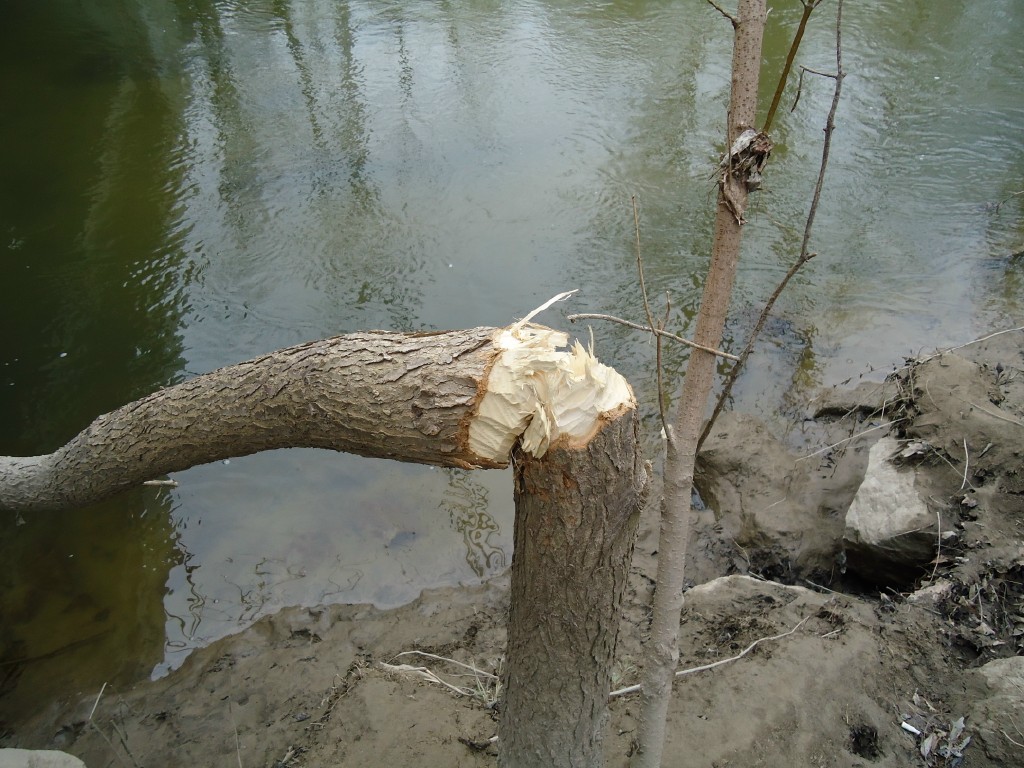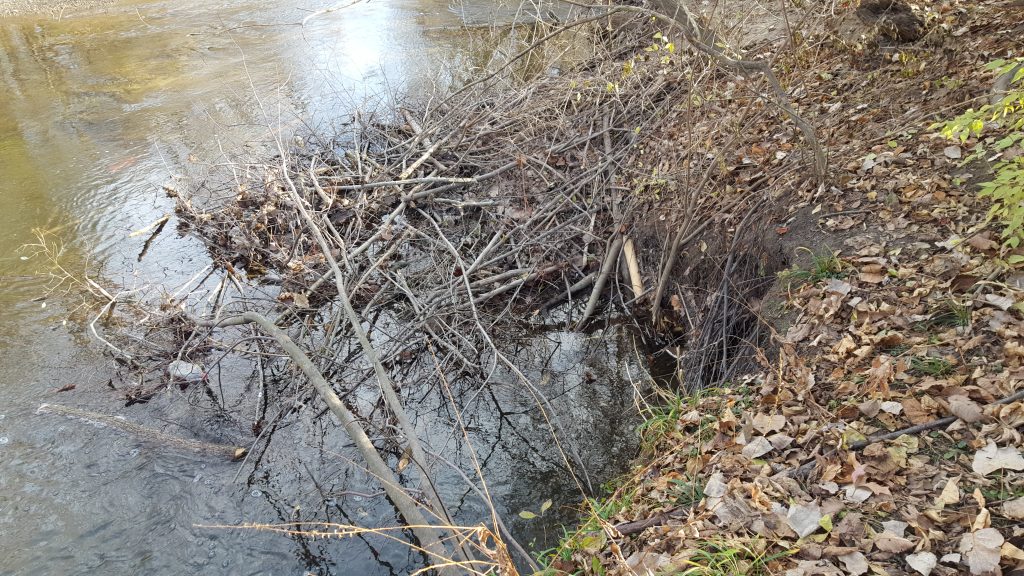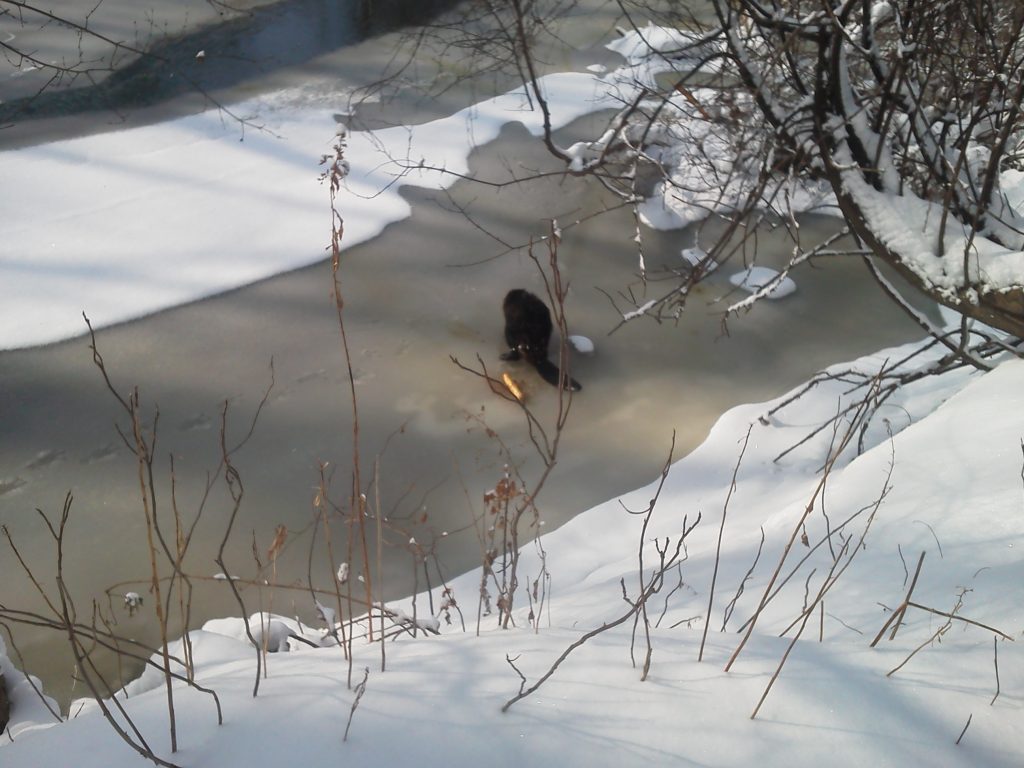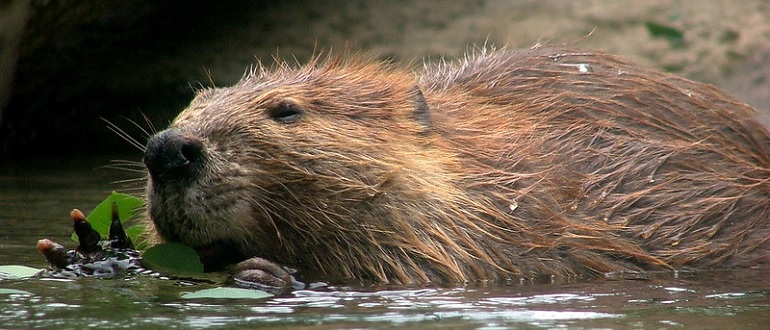The Return of an Old Friend
GET TO KNOW Rouge River Beavers
In 2010, Bill Craig discovered recently fallen trees along the Tonquish Creek.
FUN FACT: Beavers are generous creatures. They are known to share the safety and comfort of their family lodge with muskrats, frogs, snapping turtles, geese, and even the occasional otter. Muskrats are often welcomed into the family living chamber to rest and share a meal while turtles and geese are permitted to freely bask and nest on the lodge surface.
The cuttings had distinctive teeth marks. Could it be? Beaver teeth grow constantly and chewing on trees is their way to wear them down. In 2008, beavers had been discovered in Detroit at the Conners Creek power plant for the first time in over one hundred years.

Centuries ago, hundreds of millions of beavers paddled through North American waterways. Unfortunately, the species was almost wiped from existence by a fur trade that lasted three hundred years. Excessive trapping from the mid-1500s to the mid-1800s drove both Eurasian and American beavers to the brink of extinction.
In the Rouge and Detroit Rivers, oil pollution in the 1940s made it impossible for beavers to return. Conservation programs started in the 1930s have helped beavers recover, and research estimates the current North American population at 10 – 15 million. But until recently, they still avoided the Rouge River.
HABITAT & LIFE CYCLE
Water is the center of a beaver’s world. Water offers protection, ease of travel, and food. So beavers shape their world to control and use the water. In addition to building dams, beavers dig channels to expand their watery highways inland. They sometimes construct elaborate free-standing lodge homes but, in every location, a beaver’s building efforts are tailored to the site. It should be noted that dams are really only needed when water is shallow and current strong. If the water is naturally deep (>3 ft.) and slow enough, as in most of the Rouge River, beaver families may prefer to build by tunneling into the riverbank.
Our collective work to clean up the Rouge River since the 1970s is clearly paying off with the return of this sensitive mammal. Since 2010, Friends of the Rouge has received many reports of beaver sign.
Beavers are vegetarians, eating the buds, bark and twigs of trees as well as grasses, mushrooms, leaves, ferns and roots of aquatic plants. They use deep water as their winter food pantry, jamming entire cut trees into the muddy river bottom where icy cold water preserves both wood and leaves. When the family gets hungry on a cold winter’s day, they need only to cut and drag a submerged branch into the lodge for a hearty meal.
Rouge River beavers often find river conditions suitable for a simple riverbank home like the one shown below. Look for the distinctive chewed ends of branches or missing bark where the beaver had a snack. Many more cut branches have been stashed below as a winter larder.

All beaver homes have multiple entrance / escape routes, and all such entrances lie under the waterline. Living quarters are safely above the waterline with separate rooms for drying off and sleeping. Roofs of both free-standing lodges and bank dens are strongly fortified with extra building materials designed to withstand attacks by predators. If a weak spot is detected anywhere, the whole family rushes in to make repairs. The Rouge River, with its extreme fluctuations in water levels due to the continuing loss of forest and wetlands associated with urban development, must create a great challenge to their survival.
By 2014, Friends of the Rouge received our first live beaver photo (we have had several roadkill photos too but won’t show you that) from Jerry Briegel in Dearborn.

Family life is of the utmost importance to beavers. Adults form monogamous pairs for life and preside over large families. A single litter of babies is born each spring, and juveniles generally stay with their parents through two full years to help care for younger siblings and maintain the family lodge or den.
The oldest beavers (about ten years) may weigh as much as 70 pounds. Like all rodents, they have strong incisor teeth that grow continuously and must be filed down by chewing. However, in the case of beavers, the incisors are bright orange, fortified with iron, and capable of chewing through a five-inch tree trunk in mere minutes. In general, these furry little lumberjacks prefer the softer woods of cottonwood, willow, and maple and will prefer areas along the river with these types of trees.
In 2016, a wild game camera caught this video of a busy beaver harvesting branches along the Middle Rouge River. However, the beaver in the video was likely flushed from his home by a series of subsequent spring floods. Since then, we have had reports of beaver from all major branches of the Rouge River.
Parents teach the youngsters the family trade through motions and soft noises, but the single most important beaver “call” is a vigorous tail slap to the surface of the water. A tail slap alerts the family to danger. With the ability to stay fully submerged up to 15 minutes, the beaver family dives deep – and stays safe – within their watery world.
TAKE ACTION
Beavers are a keystone species, creating wetlands in wilderness areas that support vast numbers of other widlife. It is unknown what impact beavers will have in the highly urbanized Rouge River. The large logjams that we have may be mistaken for beaver dams but are mostly caused by development that has paved over natural areas and sent more water into our rivers than they can handle, causing banks to erode and trees to fall. Beavers may contribute with an occasional fallen tree but are not generally the main cause. The bank dens we have seen do not impede water flow.
Beavers will always need cool and clear streams that run through bountiful forests of trees. Beavers are shy, nocturnal animals so do your best to quietly observe them and leave them be.
If you see beaver sign or a beaver, feel free to report it to us. Please provide the location and take a photo if you can and send to spetrella@therouge.org.
MAIN PHOTO CREDIT: North American Beaver – photo by Amanda CC-BY-2.0 – image cropped
